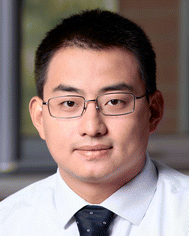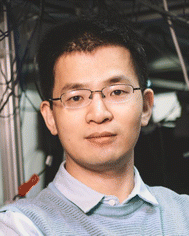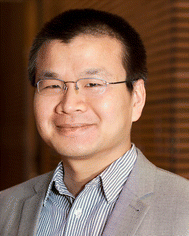Introduction to nanoscale quantum technologies
Qing
Dai
 *ab,
Chao-Yang
Lu
*ab,
Chao-Yang
Lu
 *cde and
Zhipei
Sun
*cde and
Zhipei
Sun
 *f
*f
aCAS Key Laboratory of Nanophotonic Materials and Devices, CAS Key Laboratory of Standardization and Measurement for Nanotechnology, CAS Center for Excellence in Nanoscience, National Center for Nanoscience and Technology, Beijing, 100190, China. E-mail: daiq@nanoctr.cn
bCenter of Materials Science and Optoelectronics Engineering, University of Chinese Academy of Sciences, Beijing, 100049, China
cHefei National Research Center for Physical Sciences at the Microscale and School of Physical Sciences, University of Science and Technology of China, Hefei 230026, China. E-mail: cylu@ustc.edu.cn
dShanghai Research Center for Quantum Science and CAS Center for Excellence in Quantum Information and Quantum Physics, University of Science and Technology of China, Shanghai 201315, China
eHefei National Laboratory, University of Science and Technology of China, Hefei 230088, China
fDepartment of Electronics and Nanoengineering and QTF Centre of Excellence, Department of Applied Physics, Aalto University, Espoo, 02150, Finland. E-mail: zhipei.sun@aalto.fi
Abstract
An introduction to the Nanoscale themed collection on emerging quantum technologies at the nanoscale, featuring high-quality research on quantum materials and devices for computing, sensing, imaging and communication.
Quantum technologies merge the principles of quantum mechanics with advanced technologies, paving the way for transformative advancements in various fields. These technologies encompass quantum computing, quantum cryptography, quantum sensors, quantum communication, quantum simulation, and quantum metrology, among others. Materials and structures at the nanoscale play a pivotal role in enabling these advancements.
In recent decades, nanoscience and nanotechnologies have made significant progress, enabling remarkable achievements from fundamental research to practical applications in quantum technologies. This progress has opened up entirely new horizons in the field. The topics covered in this themed collection can be loosely categorized into quantum technologies and nanoscale manipulation, quantum materials and nanofabrication, and quantum phenomena and characterization for applications in quantum computing, quantum communication, and quantum sensing.
Quantum computing is a revolutionary technology that harnesses the principles of quantum mechanics to perform computations exponentially faster than classical computers. Advancements in nanoscale quantum computing have focused on developing stable and controllable qubits, laying the foundation for the realization of larger-scale quantum computing systems.
Quantum sensing and imaging is a rapidly growing field that utilizes quantum mechanics principles to develop advanced sensors and imaging technologies. Nanoscale quantum sensing and imaging techniques have focused on creating highly sensitive sensors, such as quantum dots and monolayer semiconductors, capable of emitting single photons for precise imaging at the nanoscale level.
Quantum communication explores the use of quantum mechanics principles to establish secure communication channels. Recent developments in nanoscale quantum communication have resulted in more efficient and reliable devices, including single-photon detectors that enable accurate and efficient detection of individual photons.
The rapid synthesis and fabrication of nanoscale materials and structures play an instrumental role in the development of quantum technologies. Two-dimensional materials like transition metal dichalcogenides (TMDs), quantum dots, and nanowires have emerged as key components for quantum technology applications. Quantum dot-based devices, capable of emitting single photons, hold promise for revolutionizing computing, while nanowires offer unique properties for ultra-sensitive sensing, including applications in medical diagnostics and biosensing. The exceptional versatility of two-dimensional TMDs and their heterostructures lies in their ability to provide a remarkable degree of multi-tunability to their quantum effects, making them highly promising candidates for applications in quantum technologies.
The applications of quantum technology are diverse, and nanoscale quantum technology presents innovative prospects for numerous fields. Quantum dot research, exemplified in this collection, represents an active area within quantum technology. While it is not possible to cover all noteworthy areas within the limited space, the guest editors express gratitude to all authors for their high-quality contributions. Appreciation is also extended to the editorial team of Nanoscale for their guidance and support throughout the creation process. It is hoped that researchers in physics, optoelectronics, biology, and other relevant disciplines will benefit from these articles and utilize them as a springboard to advance the development of practical next-generation quantum technologies.
| This journal is © The Royal Society of Chemistry 2023 |



